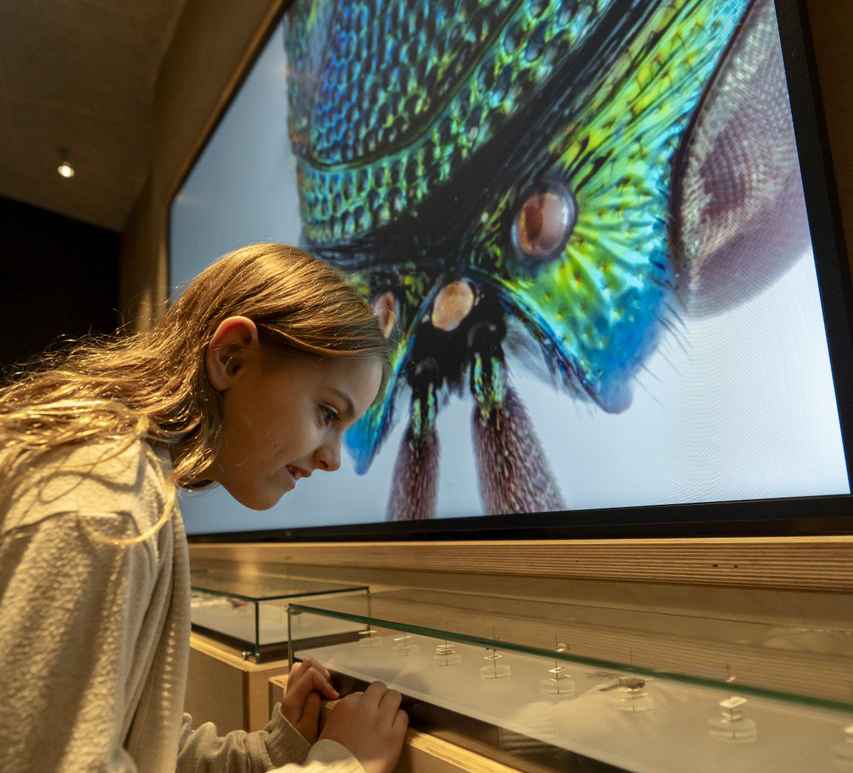I had my first encounter with a dinosaur in the same place most people do: in a museum. The dinosaur in question was a sauropod (long-necked dinosaur) called Mamenchisaurus. It was a Chinese dinosaur on display at a museum in Cardiff, Wales, where we were living at the time.
I decided there and then that I was going to be a palaeontologist when I grew up.
I had just turned four.
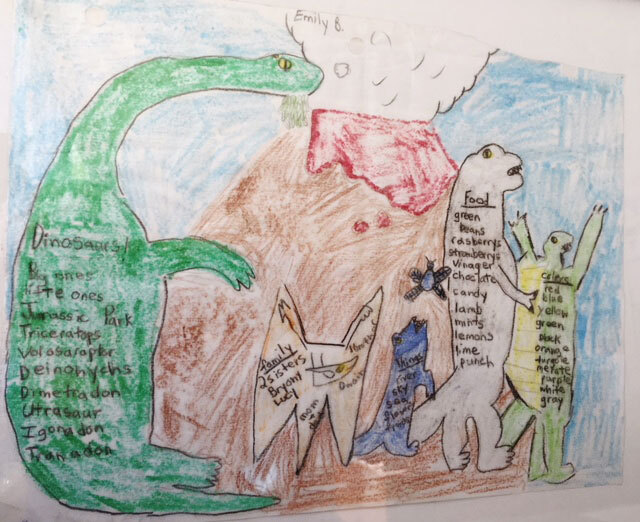
My grade three art project, in which we were asked to illustrate our favorite things. I wrote my name in dinosaurs.
I have always loved museums. As a child, I loved to visit them, especially the ones that had dinosaurs. My family, and especially my grandmother, indulged my interest. Every year, new dinosaur books, models and paraphernalia would arrive at Christmas and on my birthday.
As a special treat, my Grandma would sometimes take me to the mall to pick out my own present. When we asked at the toy store or bookshop where the dinosaur material was, we were usually directed to the ‘boys’ section. There we would find not only the dinosaur books and models I wanted, but also dinosaurs (usually of the T. rex-type variety) transformed into laser-gun touting robots. Where dinosaurs crept into the ‘girls’ section, they were either pink and fluffy with gigantic, doleful eyes, or somehow associated with Wilma Flintstone.From a marketing point of view, I suppose this must have made sense. From a scientific point of view, it was utterly nonsensical. It was like trying to say that ‘flies are for boys’ while ‘beetles are for girls’.

Examples of dinosaur toys pitched at boys.
I also have a clear memory of taking one of my prize dinosaur models, an Iguanadon, to school for show-and-tell when I seven. One of my female classmates told me “I don’t like dinosaurs. They’re for boys.” I remember responding emphatically, “Dinosaurs are not for boys! They’re for everyone!”
Amen, seven-year-old self.
Now that I am a palaeontologist at the Royal Saskatchewan Museum, I am an avid advocate of promoting palaeontology to girls and women. I strive to be a good role model to students and volunteers who work with me, and to encourage these young people to challenge stereotypes and pursue their passions and interests.
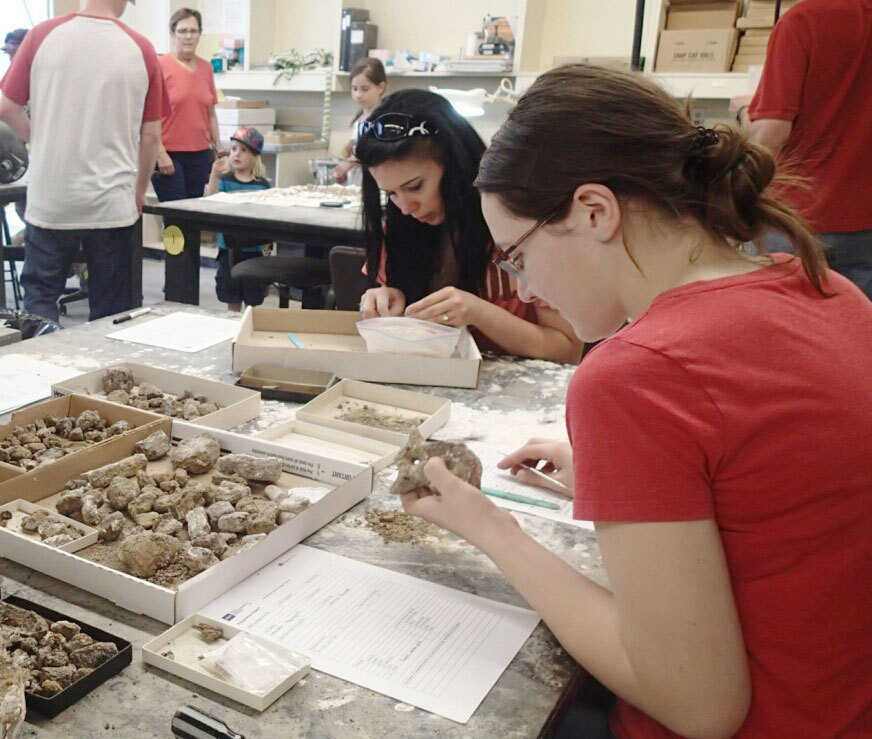
Some of the young women who volunteer with me during ‘Tea & Fossils’ at the T. rex Discovery Centre.
Thanks in part to the push to get more women into the STEM disciplines, palaeontology is no longer considered a ‘man’s field’. However, the discipline still suffers from what is known as a ‘leaky pipe’: although an equitable number of men and women receive palaeontology degrees, women are still greatly underrepresented at the professional level (i.e. museum curators or university professors). There is still a lot of work that needs to be done before true gender equity is achieved.
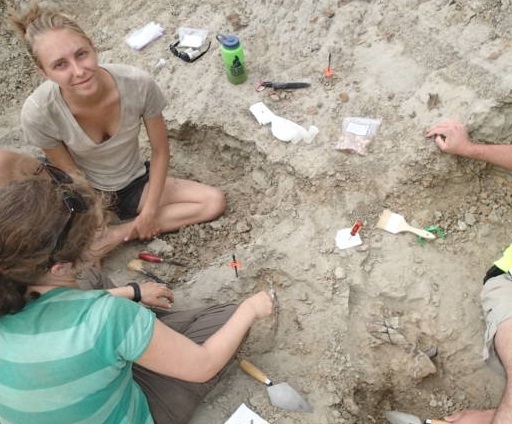
Two of my female summer students, working in a fossil quarry,
Museums have a critical role to play in encouraging girls and women to pursue their passions in science. Museum exhibits, programs and research are an opportunity to present fact and reality, challenging the biases and misinformation that is often present in the media. In a museum, dinosaurs are presented as animals in complex biological systems, not as laser-touting half-robots that can be assigned to a gender.
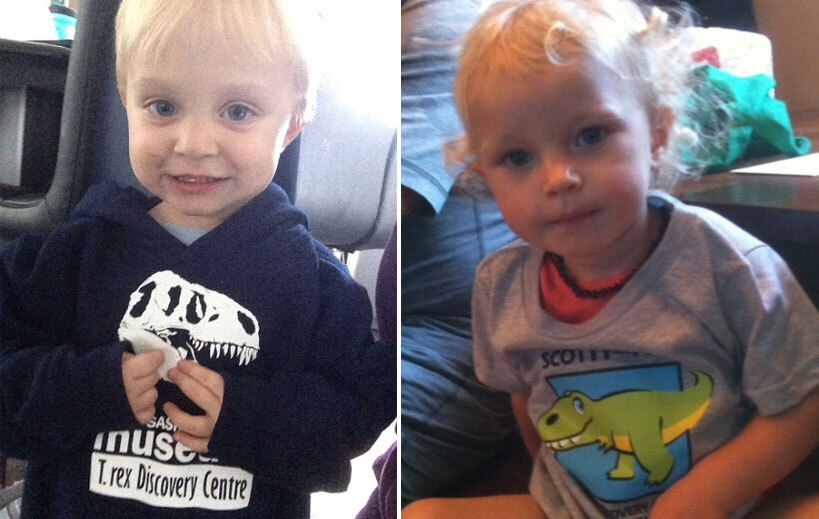
My nephew and my niece, who both love dinosaurs.
I now have the pleasure of being an aunt to a handful of awesome kids. My siblings have possibly noticed my secret agenda of turning them all – my nieces and my nephew – into palaeontologists.

